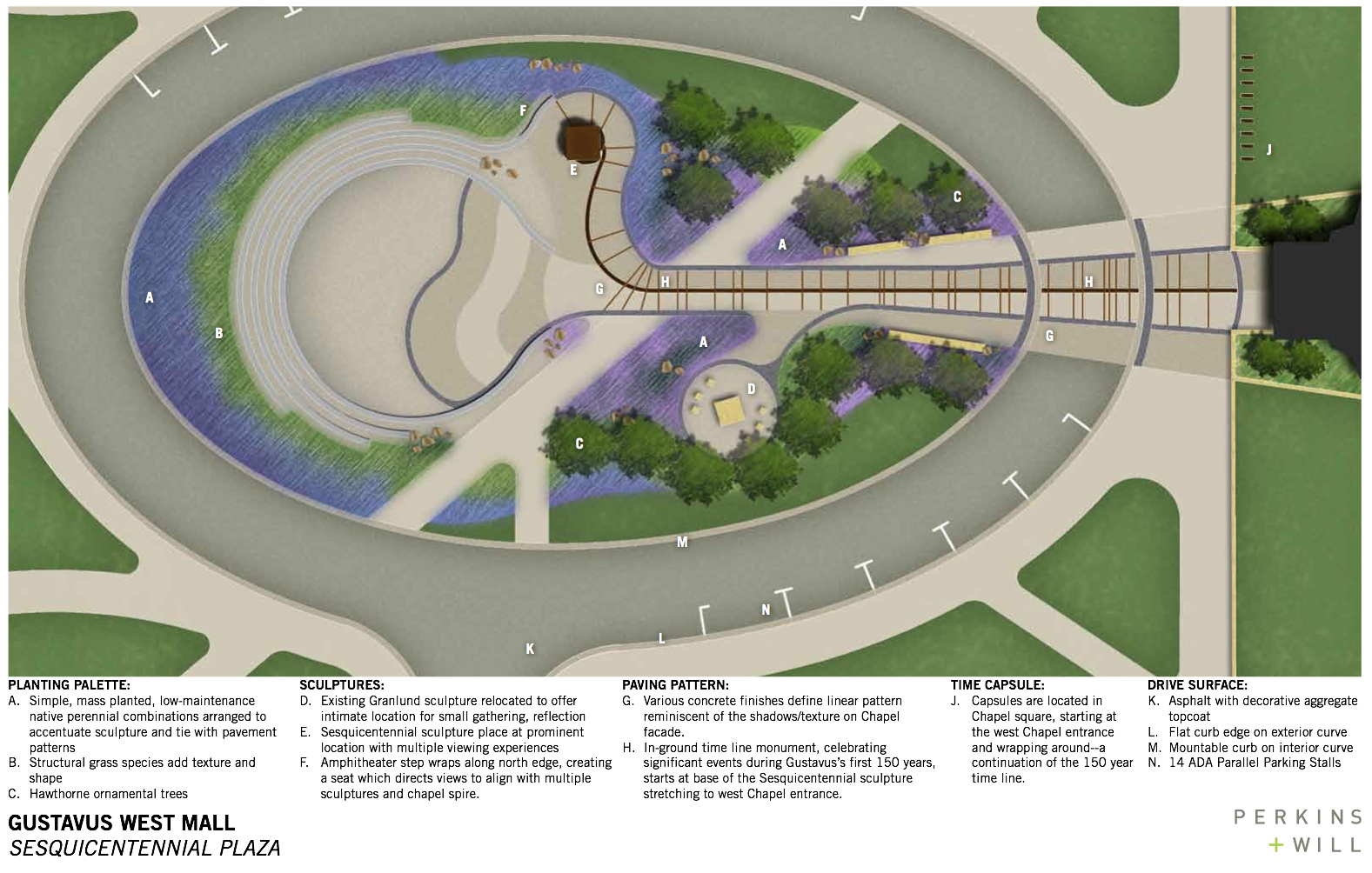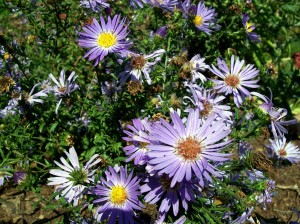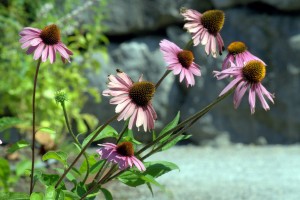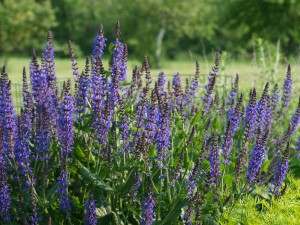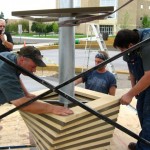
Among the many new landscapes and features the campus has taken on in the time following thesesquicentennial celebrations, one particular change has sparked controversy within the student population: the Sesquicentennial Sculpture. The sculpture is an element of the new West Mall, connecting Christ Chapel to the Linnaeus Arboretum. The designer of the sculpture, Greg Mueller, is a student of longtime sculpture-in-residence Paul Granlund and was hired to create a piece that signified the sesquicentennial anniversary year, as well as staying true to the views of his predecessor.
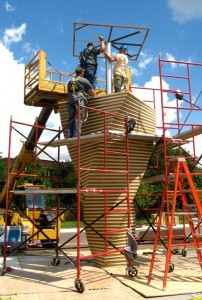
“I used to work for Paul Granlund, and working with him made me eager to keep the tradition going” sculptor Greg Mueller said.
Mueller wished to incorporate Granlund’s fondness for the helix and Mobius strip forms that represented spiritual growth and time.
“It’s a nice collaboration—the piece is site specific and site relevant. The sculpture belongs there in the plaza with the other elements, the amphitheatre, and the palindrome—which also has a twisting helix, almost feminine organic form. The whole plaza has an organic feel to it,” Mueller said.
Time was also an important factor in the development of this structure. The sculpture, in Mueller’s vision, starts with one student in 1862 and continues to grow upward.
“The 150 layers that stack and grow are the work of Granlund in a more simplified way. They gave me a lot of artistic freedom,” Mueller said. “I didn’t want to create a historical narrative as a safe literal representation; I wanted to do something riskier and bolder.”
Although with every bold move, feedback follows—this time, students believe they have a right to speak up about the resemblace of the sculpture to the tornado that occurred in 1998.
“I’m confused as to how this sculpture represents the sesquicentennial year … how can a campus that was
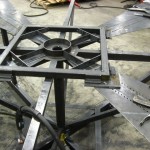
practically destroyed by a tornado celebrate its 150th year of growth and development by commemorating a sculpture that looks just like the disaster?” Junior Becca Nelson said.
“I think there may be an unintentional reference to the tornado that might add a kind of poetic nuance to it that I didn’t intend, but that irony I believe alongside with my vision can kind of play off of each other. If I set out to do an ironic sculpture, that would have failed. This is far too elegant,” Mueller said.
Mueller, who was working in Mankato during the time of this event, believes in the goodness that comes out of events even like these.
“There is some good that came out of it—they were donated truckloads of trees, they got help from people all around, the campus infastructure got a very nice makeover,” Mueller said. “That showed that the Gustavus community extends far beyond college avenue.”
The plaza itself, which lies next to the sculpture, consists of time timeline connecting to the chapel, and an oval amphitheatre.
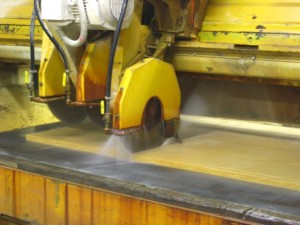
“People gravitated towards the oval design because it mirrored the circular drive next to the chapel,” Landscape Architect of the design Laura Lyndgaard said.
The design had its origins in the West Mall design that began in 2008, but it wasn’t until two years later that the Plaza design became more solidified.
“One of the main goals [of the design] was to have the ampitheater and student space, which remained throughout the entire process,” Lyndgaard said. However, the plaza’s development became increasingly conscious of Mueller’s sculpture and its context within the sesquicentennial year.
The rest of the design, including the timeline feature running throughout the plaza, was geared towards creating what Lyndgaard called a “pedestrian experience.” She said that the timeline was incorporated to help create a “a sense of place” for those walking across it every day.
“This entire space is an icon to our history,” Mueller said.
Along with Lyndgaard, landscape architects Krisan Osterby-Benson and Ben Storer also worked on the
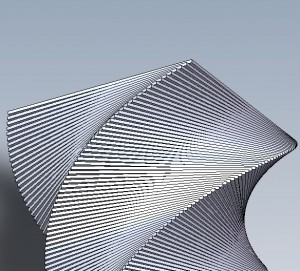
project. Osterby-Benson is a ’79 alum of Gustavus and has worked with the college on several other projects. Lyndgaard noted Osterby-Benson’s long-standing involvement with Gustavus as one of the reasons the relationship between the architects and the institution was so strong.
“Gustavus was great to work with,” Lyndgaard said. “I have been flattered with how excited everyone has been.”
Although negative sentiments about the sculpture still reside among some on campus, Meuller stands by his piece. “I’d rather have it be that way than a piece that is easily dismissed—one that acts like a shrub and gets walked by everyday. You have to make inspiring things to inspire the people,” Mueller said.
Part of the plaza design incorporates several native, adaptive plant species, which flourish at varying times of th year to ensure a pleasant aesthetic all year round. If you look closely within the next few days, you’ll notice several varieties of flowers are currently blooming around the plaza. Three types are pictured below (top to bottom): Sky Blue Aster, Purple Coneflower, and Blue Salvia.
Thanks to Joel Jackson, CAB Construction, Extreme Powder Coat, I & S Group Engineers, Greg Mueller, Murphy Rigging Inc., Perkins Will Architects, Oakdale Precision Engineers, Ohme Enterprises Inc., Siehndel Construction and Vetter Stone for sharing their photos with The Weekly for the making of this feature.
